Kongsvinger Fortress
Get to know Kongsvinger Fortress and its unique architecture and history!
You can also access the map through QR codes placed around the fortress, using a QR code reader/scanner application on your phone.
Kongsvinger Fortress is managed by the Norwegian Defence Estates Agency National Fortification Heritage.
Enjoy!
Restoration of fortress walls
Here, at he maingate to Kongsvinger Fortress, the walls have both light joins and dark joins. Dark joins means old walls that have not been restored. Walls with light joins have recently been restored with new lime mortar.
Why are the walls being restored?
In the past centuries one has used cement when restoring fortress walls. Cement is an impenetrable and stiff material, and moisture in the walls is closed in.
When there is frost, the water freezes to ice, the rocks are squeezed out and the filler cracks.
Even more water penetrates and washes away the lime mortar, leaving cavities behind the cement. In the worst case, parts of the wall can collapse.
How a fortress wall is restored
A protected wall must be treated with the original materials and methods.
When fortress wall are restored today, cement is replaced by lime mortar. Old cement and loose material is removed. The joins are reinforced with filler rocks and new lime mortar.
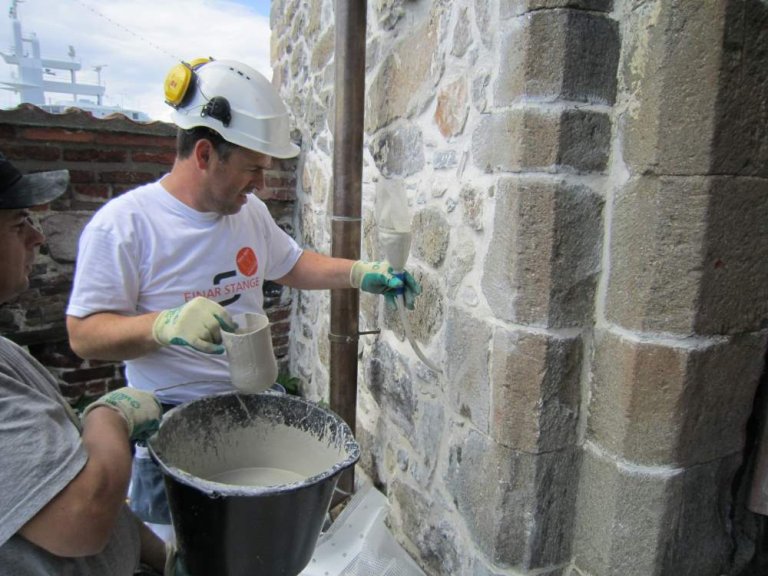
As lime mortar requires temperatures above 5 degrees Celsius to set, this work must be done during the summer season.
A puzzle
Some parts of walls have to be dismantled before being reconstructed. Stones are labelled with numbers, the area is photographed, and the stones are dismantled.
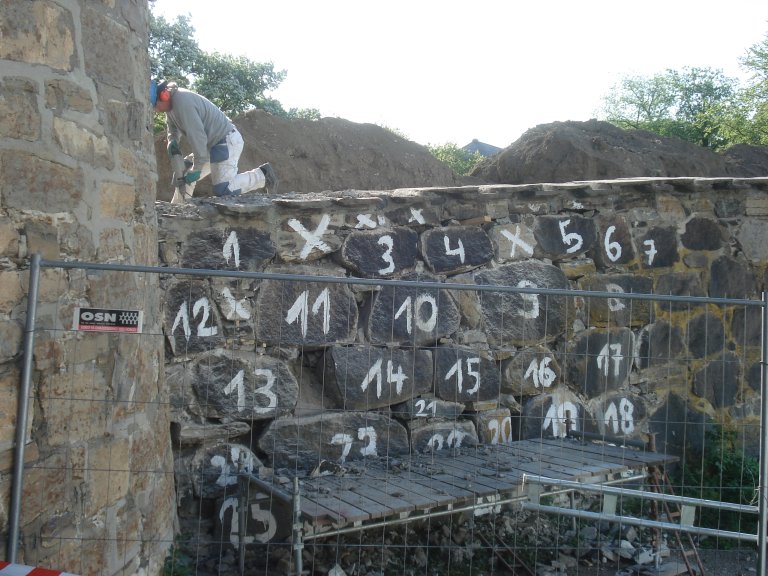
When reconstruction, the stones are replaced in their original positions. The stones can weigh from 100 to 500 kg, and some even up to 1.5 tons.
Safe walls at Kongsvinger Fortress
Norwegian Defence Estates Agency National Fortification Heritage represents one of the country's foremost professional communities with respect to cultural monuments.
Up to 2014 NOK 160 million has been spent restoring walls and buildings at Kongsvinger fortress.
Restoration of the walls is a work in progress.
This ensures accessibility and safety for the almost 38 000 visitors who annually visit the fortress.
The ravelin and ravelin gate
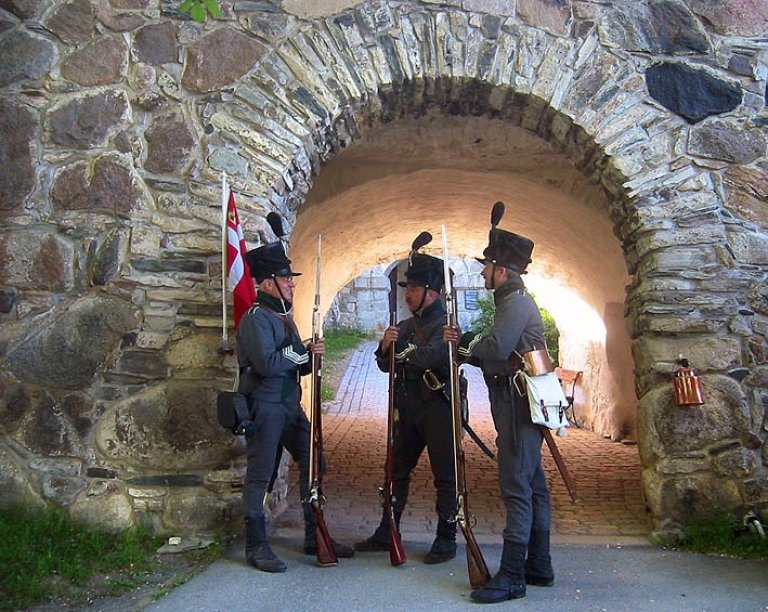
You are now standing in the ravelin.
The fortification was constructed around 1680–90, and belongs to the oldest development period of the fortress.
On the left side of the gate arch above you there is a smaller room that was originally used as a powder store for the nearest cannon battery.
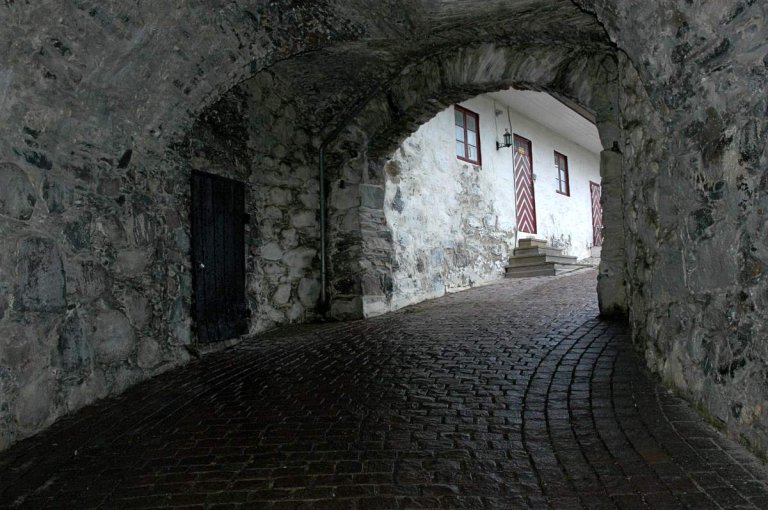
The beautiful iron door is original to the room, which was built in 1735.
The ravelin gate
The walls on either side of the gate arch below you contain bomb-proof rooms. These rooms were built as living spaces for the soldiers, who both ate and slept here.
Important exits
There is a gate in the walls facing the exterior of the fortress. This is one of the four “exit gates” in the fortress.
These gates were important in order to be able to attack the enemy and retreat quickly. Or as an escape route if the fortress was breached.
Recently restored
This gate has been recently restored along with large areas of the fortress. Traditional methods were employed, and you can clearly see the skilled craftsmanship used.
Norwegian Defence Estates Agency National Fortification Heritage, which manages the fortress, is in possession of one of Norway’s leading cultural monument environments.
The King’s battery
You are now standing in one of the oldest parts of Kongsvinger Fortress – “The king’s battery”.
This small fortification was one of the first to be built when the fortress was established at the end of the 17th century.
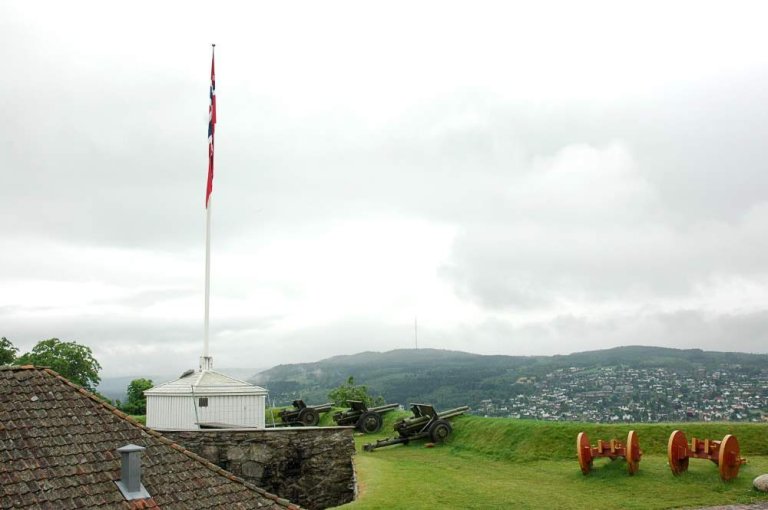
9 batteries
“Battery” is the designation for cannon locations on the fortress walls. There are a total of nine batteries in the fortress.
The room with its entrance in the gate under the battery was built as a powder store for the canons on the nearest batteries.
Flagpole – an important measuring point
The flagpole at Kongsvinger Fortress was the fixed datum for the first topographical maps in Norway.
Geographical Survey (Norway) (now the Norwegian Mapping Authority) was established in 1773 by General Huth, and surveying of the country was actually begun in 1779, right here in the border lands with Sweden.
Meridian of origin
The so-called meridian of origin passes through this point, which is a part of the right-angled coordinate system on which the map was based.
The measuring point was used up until 1916, however from 1840 the measuring point was moved from Kongsvinger to Christiania Observatory in Oslo. For the past 50 years, the fixed datum for Norwegian mapping has been Greenwich Observatory in London.
Flag house
The flag house was constructed in 1994 as a replica of an earlier blockhouse. See excample of a blockhouse from Fredriksvern Shipyard:
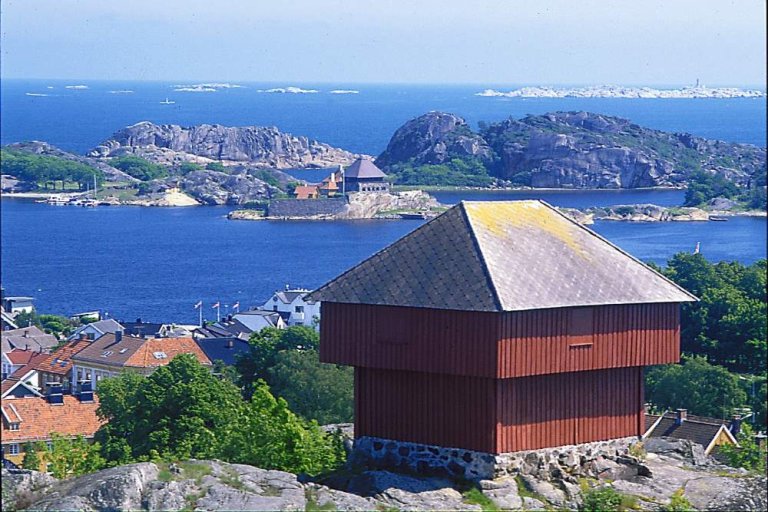
Saluting at the fortresses
You are now on the Queens batteri where saluting with cannons take place.
Ordinarily there are three cannons in a salute battery. Each cannon has a crew of two; one who loads and one who fires. The crew is from the home guard, and they carry the appropriate uniform. On weekdays the salute is at noon, while on Sundays it is at 1 p.m.
Commands
The salute commander heads the salute troop and gives the orders to fire the salute. He cries the cannon's number and “Fire!” (Ild) No other commands are used in this context. One fires from right to left in the firing direction.
Number of shots
Ordinarily 21 shots are fired. For important events in the royal family there is a double royal salute, which is two times 21 shots. In the case of deaths in the royal family, there is a 21 shot mourning salute. There is a gap of five seconds between the shots in an ordinary salute and a gap of 30 seconds between the shots in a mourning salute. In a double salute there is a one minute gap between the series.
The Royal Family is saluted
Dates for regular saluting:
- 21. February - H.M. King Harald's birthday
- 08. May - Liberation Day after WWII (1945)
- 17. May - Constitution Day (1814)
- 07. June - Dissolution of the Union with Sweden (1905)
- 04. July - H.M. Queen Sonja's birthday
- 20. July - H.R.H. Crown Prince Haakon's birthday
- 19. August - H.R.H. Crown Princess Mette-Marit's birthday
The barracks
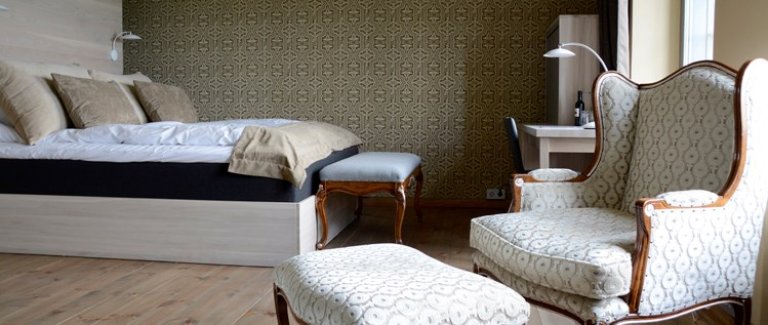
New life on historic ground – via a modern conference hotel in historic guise.
The barracks at Kongsvinger were constructed in the 1770s. Today, they have been transformed into a historic hotel with a distinctive character. Hotel Königs Winger was opened in 2013.
Distinctive hotel rooms
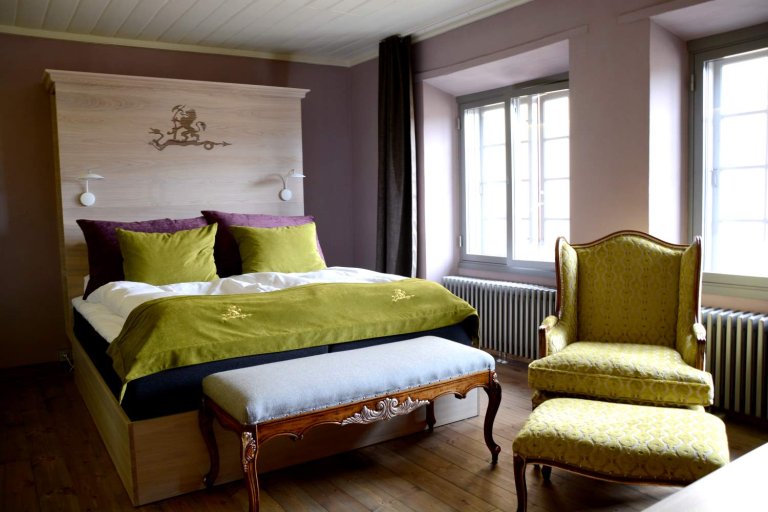
When the building was completed in 1773, it housed large rooms on both floors – the first floor was for soldiers and non-commissioned officers while the second floor was for officers. Today, these rooms, which previously housed a number of soldiers, have been converted into distinctive hotel rooms.
Recreation of details from the 18th and 19th centuries
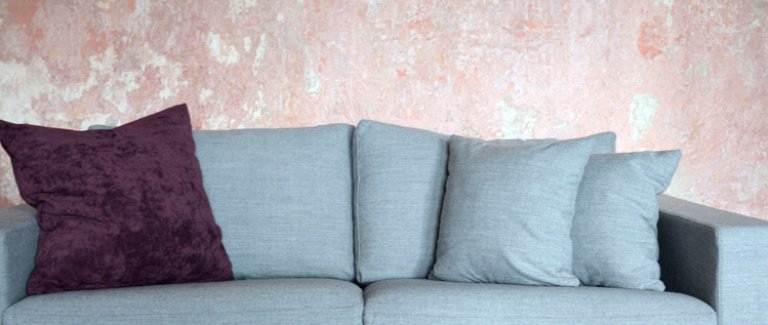
The conversion and restoration was carried out with respect to the original history of the building – old measurement techniques and details were used to recreate colours, wall hangings and other details from the period.
“Blind window”
As you can see, the facade of the barracks has been built fairly strictly with the windows positioned according to an even rhythm.
In order to make this fit with the rooms inside, one window has been positioned in the wall towards the neighbouring building, the arsenal, measured simply as a “blind window”.
This was not unusual in historic times, when architectural ideology required a strict symmetry.
Built-up gable
Looking at the gable, you can see that a darker type of stone has been used in the top section. This is because the shape of the roof was changed early in the 20th century and the gable needed building up to full height.
New life on historic ground
One of The Norwegian Defence Estates Agency’s missions is to facilitate new use in cooperation with external stakeholders. Kongsvinger Fortress is a good example of this.
Conditions are now in place for year-round use of the fortress by Anno Museum, Norsk Fengelsemuseum, Kongsvinger Fortress Museum, Kongsvinger Tourist Information and a unique and modern fortress hotel and restaurant.
The Well house
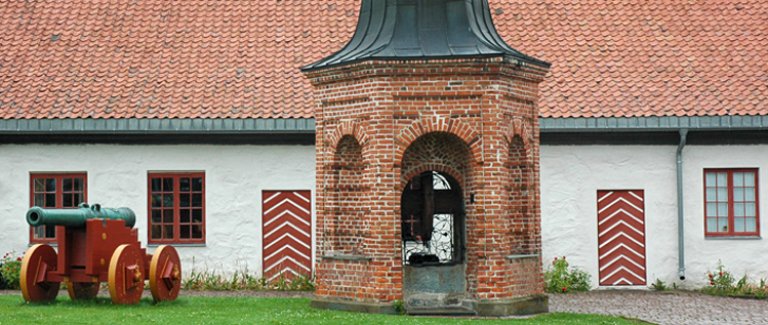
The well house and the mail well.
There are five wells in the fortress, and this is the main well. The fortress wells were important for ensuring water supply during sieges and, of course, in the event of fire.
The main well
This main well is 13 metres deep, holds 25,000 litres and was primarily used to supply water for the animals in the fortress.
The small well house was built in 1776.
Fortress square – culture stage
Kongsvinger Fortress is called the “Culture fortress of the borderlands” and many cultural events are held here on the fortress square.
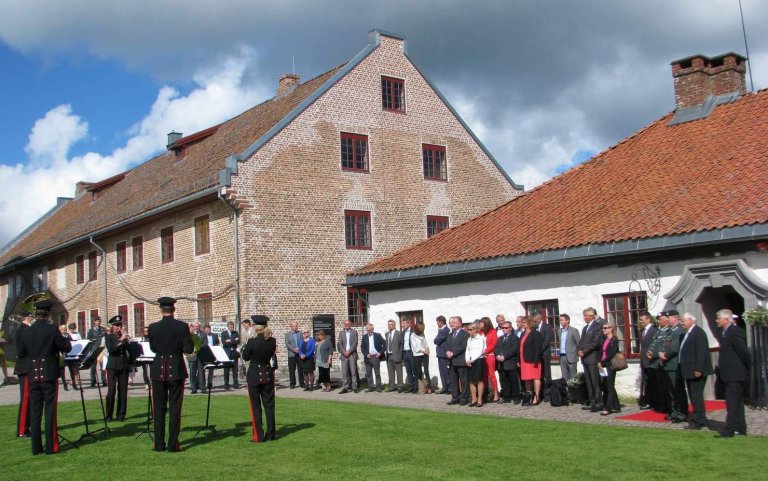
The fortress is a significant and open area for many different cultural expressions, including art, culture, experiences and commerce.
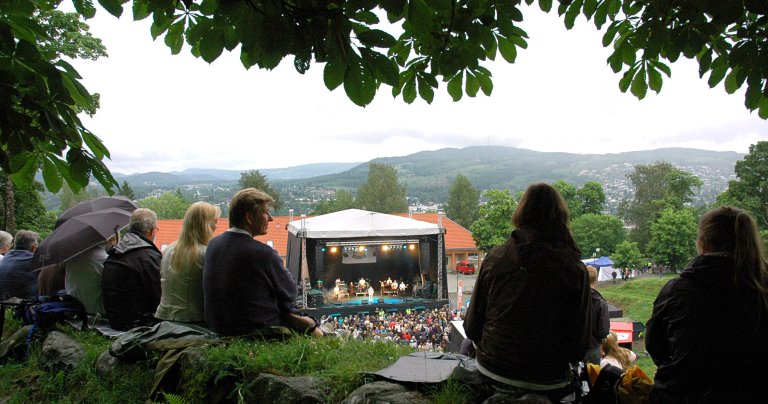
One of Norwegian Defence Estates Agency National Fortification Heritage’s missions is to facilitate new use, and make the Kongsvinger fortress accessible to the general public.
Slaveriet
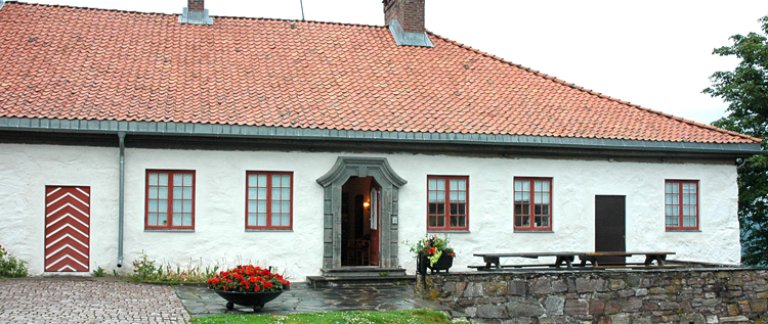
Officers and prisoners
Slaveriet was built in 1702 for the purpose of housing officers.
The building was given the name “Slaveriet” in the early 19th century. The reason was that it was used to house prisoners, during a period when there were a lot of them in the fortress.
German occupation
Kongsvinger Fortress was under German command from 16 April 1940. From 1941 the fortress was used as a training facility for the newly established Norwegian SS.
The Germans made many changes to a number of the buildings during the war years.
The building which best shows the changes made by the Germans is Slaveriet. The building was converted to a reading room, sitting room with fireplace and refectory, following the traditional style.
Dog house
In the walls under the front terrace there is a small room which it is said used to be a doghouse for the German commanding officer.
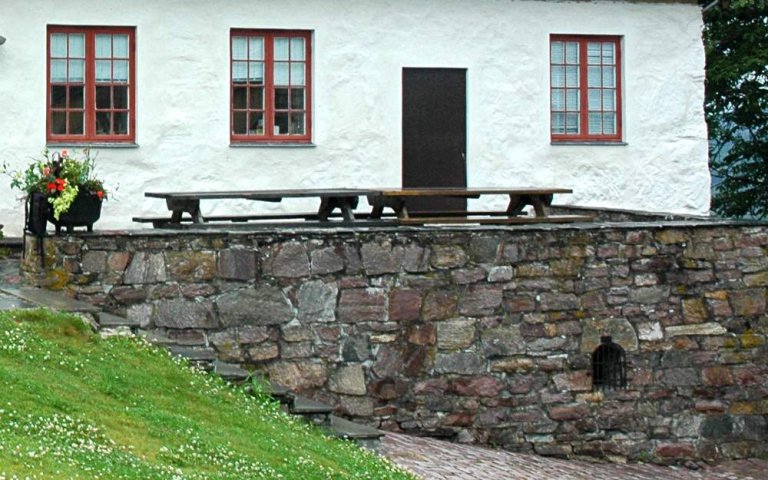
Today
Today, the Slaveri is used as offices for National Fortification Heritage.
The Commander's residence
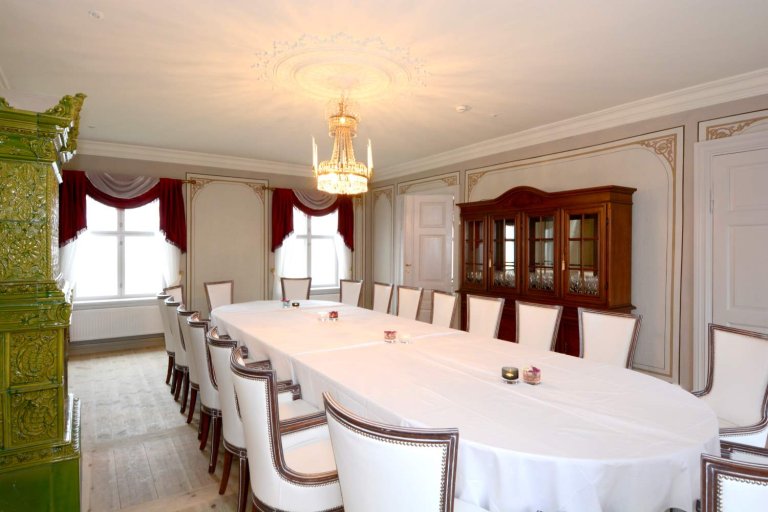
The Commander’s residence was built in 1683 and was one of the first buildings to be built in the fortress.
The Commander’s residence has now been furnished as a delightful restaurant which has taken the place of the old sitting rooms.
The Commander’s residence was constructed in wood according to local building custom and was typical of the first buildings in fortresses. Local craftsmen were used.
13 kings
The walls of the Commander’s residence at Kongsvinger Fortress contain a lot of history, and many famous people have stayed here.
All of the 13 kings who have visited the fortress throughout history – from Christian V to Harald V – would have sat at the table in the Commander’s residence.
Artist Erik Werenskiold
People have also grown up here; the artist Erik Werenskiold (1855–1938) lived here during his childhood years, when his father was commander of the fortress.
Werenskiold is particularly well known for his illustrations of Norwegian folk tales.
New life on historic ground – restaurant
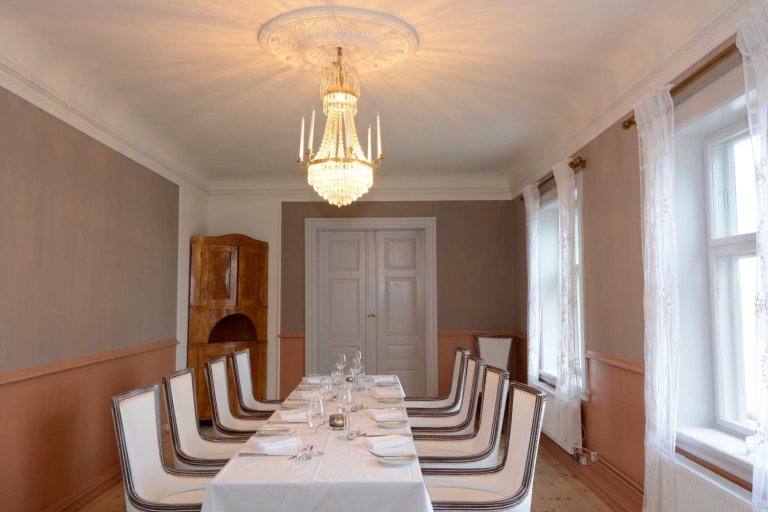
The Commander’s residence has now been furnished as a delightful restaurant which has taken the place of the old sitting rooms.
The sitting rooms have been decorated reusing the original colours and details. The arched cellar rooms have been fitted out as wine cellars
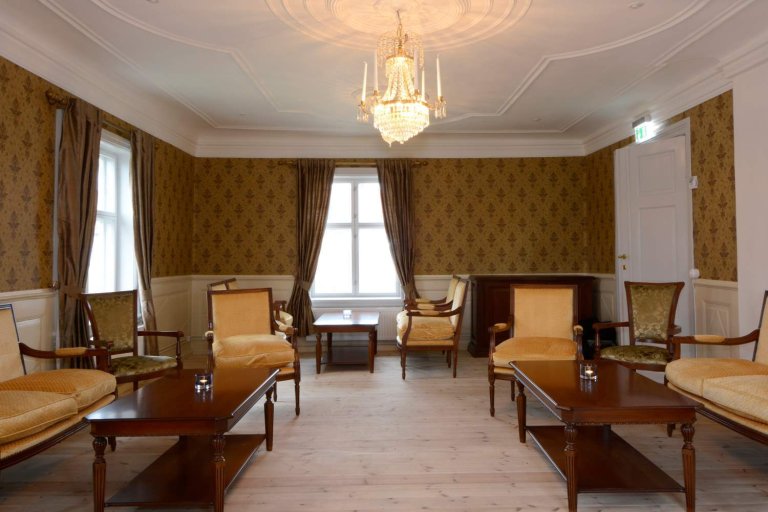
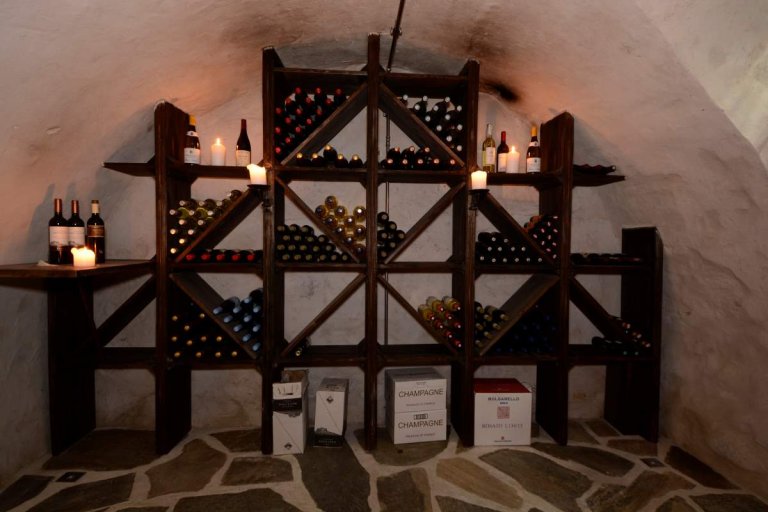
Provisions storehouse
You are now standing in front of the Provisions storehouse - one of the oldest buildings in the fortress.
The provisions storehouse was established at the same time as the fortress in 1682.
Storage area
It was important to have a storage area for provisions in fortresses. Salted and smoked meats, and light beer constituted necessary elements of the diet.
Baker’s ovens
The bakery, built in 1721, is located in the bottom end of the building, towards the Prince’s battery. Two intact baker’s ovens can be found here.
Self-sufficient
Bread was a significant part of the soldiers’ diet and it was important for the fortress to be self-sufficient in the event of a siege. The flour was a special blend of old, Norwegian grain types; barley, rye and oats.
New life on historic ground – Defence museum
Today, the provisions storehouse is used as a museum, run by the Friends of Kongsvinger Fortress.
Several exhibitions
The exhibitions are concentrated on telling the defensive history of the district. The “Good Helpers Exhibition” shows the significant border pilot and courier traffic across the border with Sweden during the last war.
The main exhibition shows the history of Norway’s defence from Viking times up to the present day.
Art in The Inner Powder Magazine
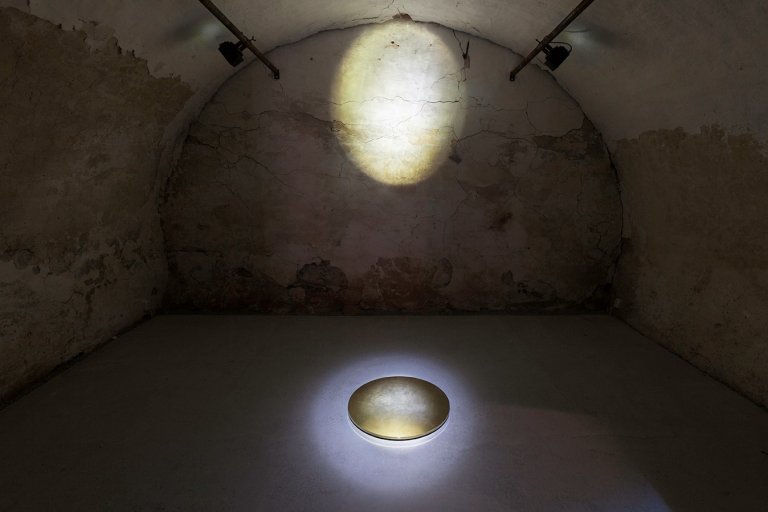
You are now at The Inner Powder Magazine, where you can experience "The Return of the Prime Meridian", a sound installation by Maia Urstad. Running time approx. 15 mins.
Inside the powder magazine you will encounter sounds from the world beyond the fortress's walls combined with sounds that have been an enduring feature of life at the fortress.
Historical background
The fortress's flagpole served as Norway's prime meridian for over 60 years, starting in 1779. A prime meridian, or line of zero longitude, is used for determining the longitude of any other place on earth. Since 1884, the internationally recognized prime meridian has been a line of longitude running through the observatory at Greenwich, London.
What will I hear?
Sounds from the fortress, such as a bell ringing, a rope flapping against the flagpole, gun salutes, rain, and wind. The key feature is the fortress's bell, which was used to establish the time and to warn of imminent events.
These sounds from the fortress are combined with sounds from the world beyond its walls, such as a muezzin's chant from Ramallah, recordings made in a bar in Morocco, and fragments of a news broadcast announcing North Korea's decision to switch time zones by putting its clocks back 30 minutes.
What is The Inner Powder Magazine?
The store was built in 1683 to store powder. Its wall are 90cm thick and the roof arch is reinforced with timber. The building was closed to the public until 2016.
